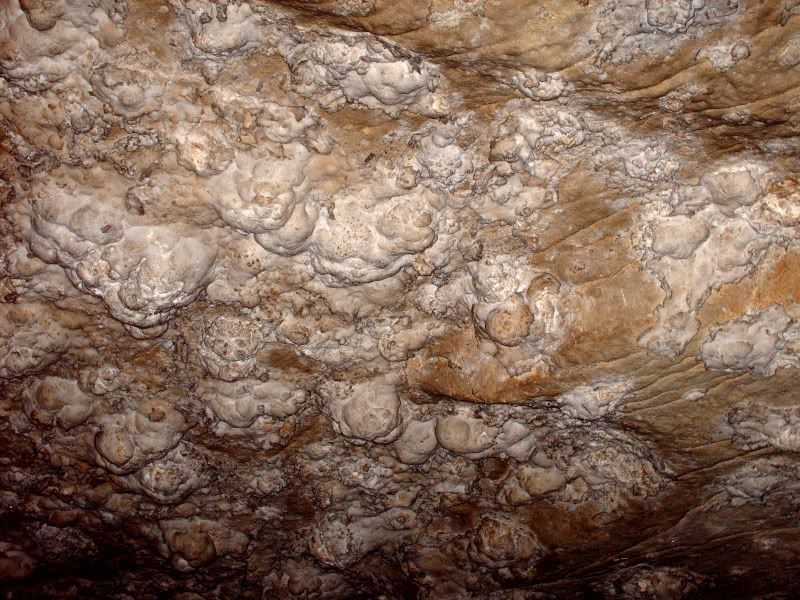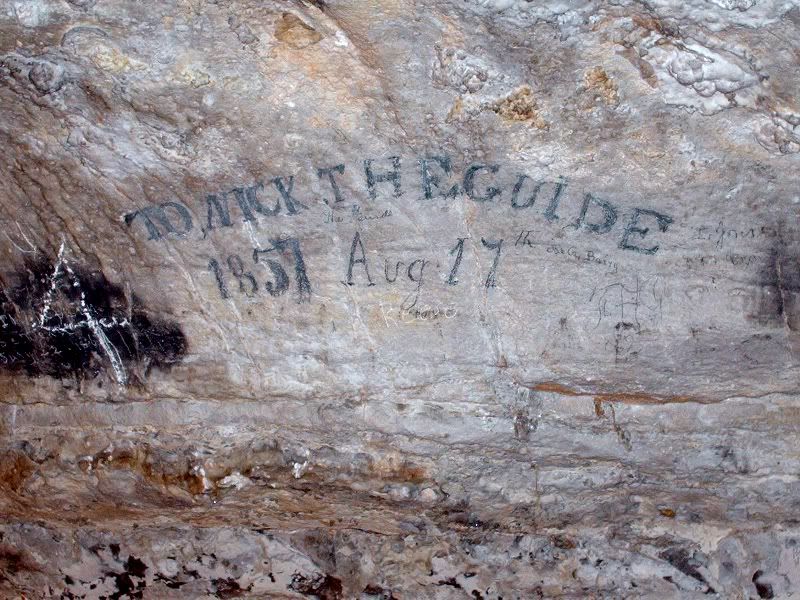I wrote this up a few weeks ago. A friend suggested it might make a nice coffee table picture book. I might look into doing that for my family.
* * *
I grew up on the former property of the "World Famous Tate Springs Resort." Whatever. Some interesting old buildings and some ruins, but mostly for me the property was about tunneling through kudzu vines, picking blackberries and winter sledding.
In high school we researched the property. After that we were so proud of ourselves and our brush with history--you'd have thought we'd created something historical ourselves. But, hey...when a kid starts to respect history, that's progress.
In the 1800's there was this belief in the medical community that mineral spring water had fantastic curative properties. Sick people were always being packed off to them. An entire industry sprang up around exploiting the water that flowed out of underground rock, bearing trace minerals.
There in east Tennessee one of these mineral springs flowed out of rock into this pretty hilly country, and someone bought it and built around it. This particular resort, "Tate Springs," would have had a five star rating by modern standards. At the unheard-of price of twenty-five dollars a day (three meals and amenities included), you could enjoy the nasty-tasting spring water and the healthy could play tennis and golf (eighteen holes, trimmed by a flock of sheep in the Scottish tradition), enjoy the riding stables and grand ballroom. The rich and famous came there and lent their impressive names to the roster. Ford--Rockefeller--Studebaker--among the other famous families to enjoy the pampered setting.
The Great Depression and declining interest in mineral water killed off the profits, and some time in the 1930's the spring, hotel and outbuildings were all sold to a group of people wanting to house a Christian home for kids. So that's where we all came in.
For years the kids were housed, schooled, slept and fed in the grand hotel. Here it is in the 40's.
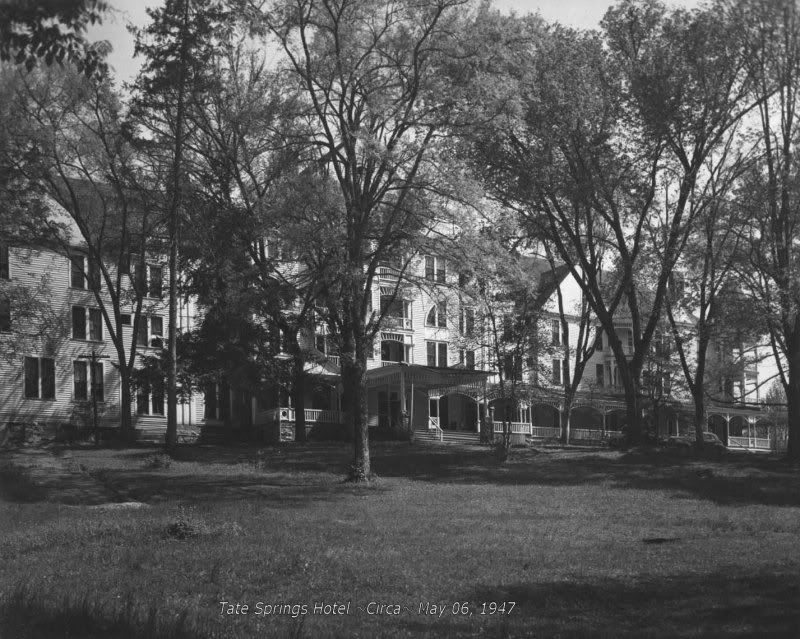
In high school we researched the property. After that we were so proud of ourselves and our brush with history--you'd have thought we'd created something historical ourselves. But, hey...when a kid starts to respect history, that's progress.
In the 1800's there was this belief in the medical community that mineral spring water had fantastic curative properties. Sick people were always being packed off to them. An entire industry sprang up around exploiting the water that flowed out of underground rock, bearing trace minerals.
There in east Tennessee one of these mineral springs flowed out of rock into this pretty hilly country, and someone bought it and built around it. This particular resort, "Tate Springs," would have had a five star rating by modern standards. At the unheard-of price of twenty-five dollars a day (three meals and amenities included), you could enjoy the nasty-tasting spring water and the healthy could play tennis and golf (eighteen holes, trimmed by a flock of sheep in the Scottish tradition), enjoy the riding stables and grand ballroom. The rich and famous came there and lent their impressive names to the roster. Ford--Rockefeller--Studebaker--among the other famous families to enjoy the pampered setting.
The Great Depression and declining interest in mineral water killed off the profits, and some time in the 1930's the spring, hotel and outbuildings were all sold to a group of people wanting to house a Christian home for kids. So that's where we all came in.
For years the kids were housed, schooled, slept and fed in the grand hotel. Here it is in the 40's.

The grand ballroom, I believe, was turned into a chapel room, where church services were held. My dad worked there through the fifties. Then sometime in the late fifties the grand hotel burned to the ground. It was never rebuilt.
Cottages were built to house the kids, as well as a small school building and eventually a chapel....and that's where my childhood intercepted the history of the place. Most of the outbuildings still stood when I was a kid, many of them still in use.
For instance, we lived in a small cottage behind the hotel--whether it was designed for a family of workers or as a rentable cottage, I don't know. Ironically, it was listed as the "Sadler house."
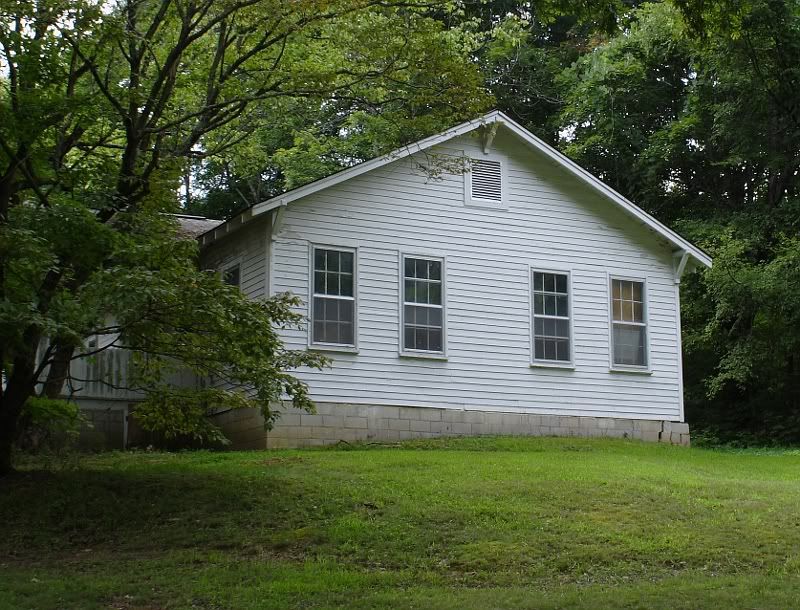
Sadly, it's crumbling today.
A large Victorian gazebo stood over the original spring. It's still standing, and seems to be in good repair.

I recently visited the campus and took some pictures. I walked around the springhouse--I dared not climb it, because although it looked good, I didn't really know how recently the stairs and upstairs floor had been looked after. To be honest, I was remembering my mom's voice rattling off instructions: "Now, don't go climbing that springhouse. Those stairs'll give way and kill ya."
Sadly, some trees have grown to block the best view.
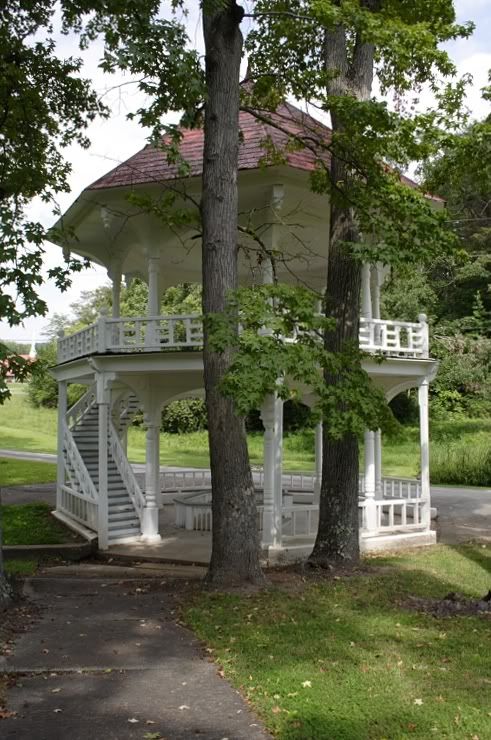
I stood on a crumbling walkway, irritated by the trees growing up to ruin my view. Then I swung the camera around to capture the rest of the walkway.
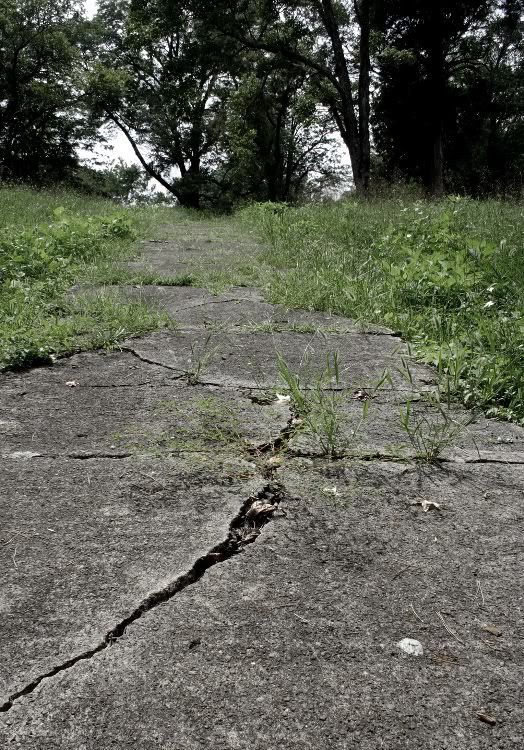
Once you get over the hill the walkway becomes impassable--at least it did in my day. But at the other end of the walk is what's left of the grand hotel.
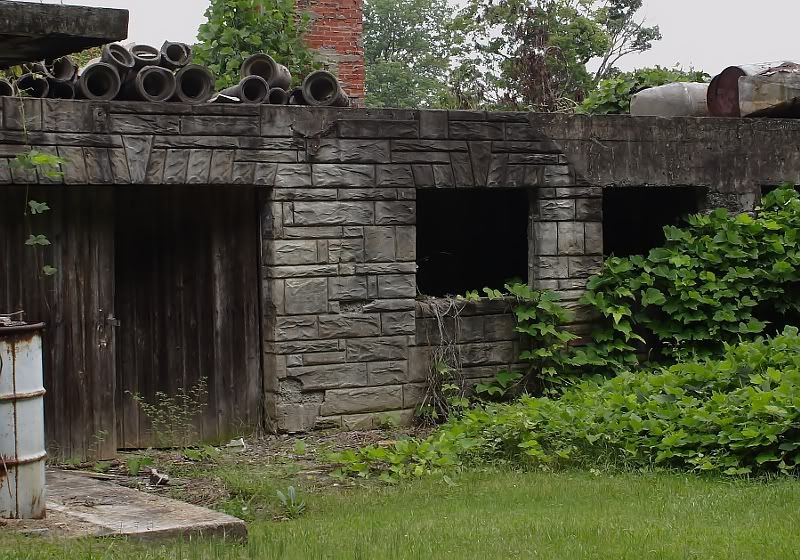
That would be the east end of the basement--gutted out and threatened by encroaching kudzu vines. Another angle of this end shows more kudzu moving in, like a silent, slow-moving herd of elephants.
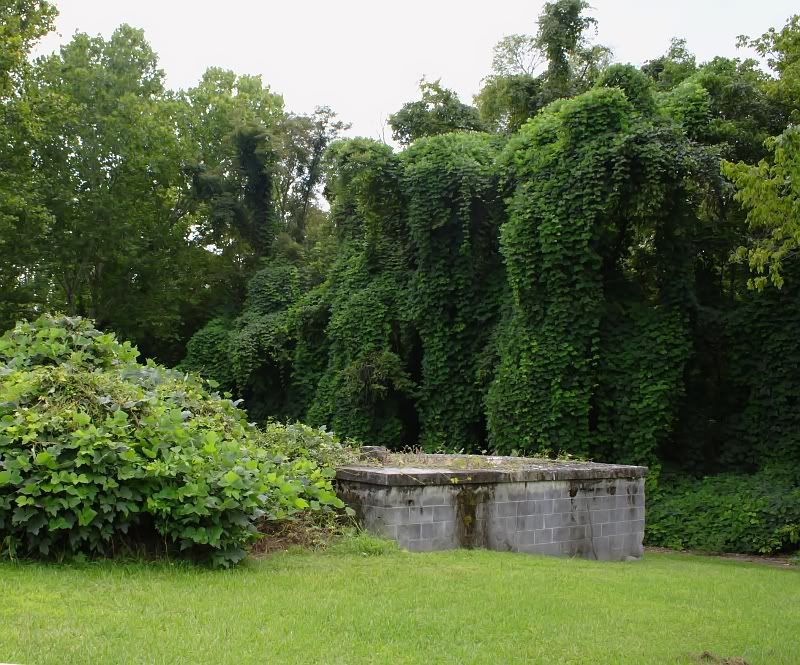
Hard to imagine the rich and famous enjoying the amenities of the old, fine hotel establishment.
Funny, this hill seemed longer and steeper when we were hauling sleds up and cruising down on the rare snow days.
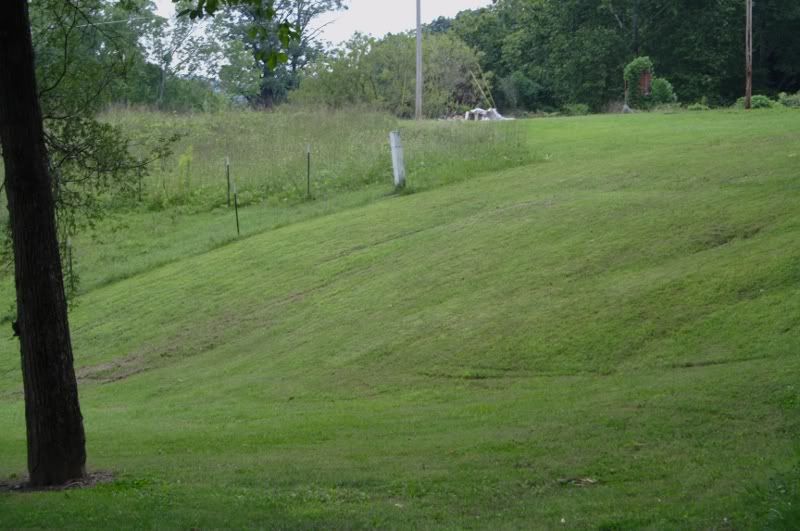
We got maybe a snow day or two every year. We relished them. Adequate snow clothing would be a luxury down there, though, a whole snow set to be worn twice and outgrown. So we just dressed as warmly as we could and went inside to moan and groan by the coal stove (I'm not kidding about that!) as our frozen appendages thawed out. Then we'd be out again to make the best of the snow while we had it. But take another look at that photo.

See the vine-covered chimney? That, again, is the old hotel. While there was a day when the pampered rich owned the world and took their vacations in front of my sledding hill, this was our time. We "owned" the hill, never giving a thought to the chimney and ruins in whose shadow we played.
In my time, "Miss Dewey" respected the history and regularly cleaned out the spring. She'd scrub the rocks, drain out the dirty water and the little rocky hole would fill back up with fresh, clean water. Looks like nobody does that now. The "spring" part of the springhouse has been boarded over.
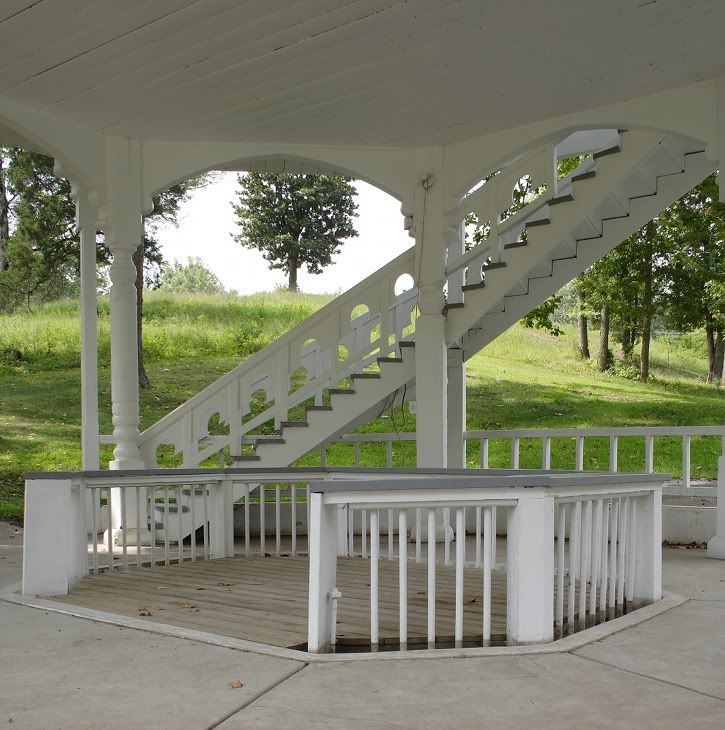
Miss Dewey lived in an old, tiny cottage on "Rowdy Row." Back in the day, that's where they put all the drunk, miscreants and general ne'er-do-wells, to keep them from disturbing the Victorian ladies. When I did the history and found out about Rowdy Row, it struck me as deliciously ironic, Miss Dewey living on Rowdy Row, in a cottage built for trouble-makers.
Miss Dewey subscribed to a Christian belief system that said you could reach a state of "sinless perfection," following an act of grace called sanctification. "You might make a 'mistake,'" I remember her saying. But it wasn't a sin. She also believed that each act of sin caused the rest of us--the non-sinlessly perfect--to lose our salvation. I lived in a constant state of fear for my eternal soul. I'd be going along, having my relationship with God, and I'd flub up on something. An unkind word, a bit of gossip--and one glare from Miss Dewey would send me into a tailspin. I was on my way to hell again, and so it went. I'd get back on track, then get knocked off into the depths of fear.
Miss Dewey did not like children. But for all her faults, she cared for the spring and kept the history alive.
If you're driving down the highway there, you'll see two structures in rural Tennessee that seem wholly out of place. One, of course, is that big, beautiful Victorian springhouse. The other is a Tudor-styled building, also part of the old resort.
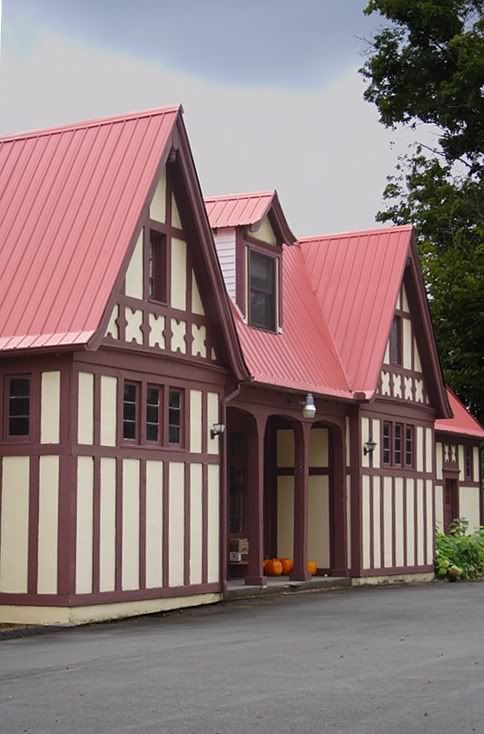
This was the bath house, built in front of the swimming pool, which has since been paved over. When I was a kid the bath house was used as a storage facility. Now it's been internally renovated to house the children's home offices. Yes, the children's home still owns the property, and houses a number of children. The school building I used is still in use. I wasn't able to take pictures on the "modern" side of campus. While the resident kids are waivered for photographing, day students are not. School was just letting out and day students were getting on the bus to go home, so the nice lady in the bath house office asked me not to take their pictures. Oh, well.
One more flash back. Mr. Tomlinson, who built the resort, built himself a "big house."
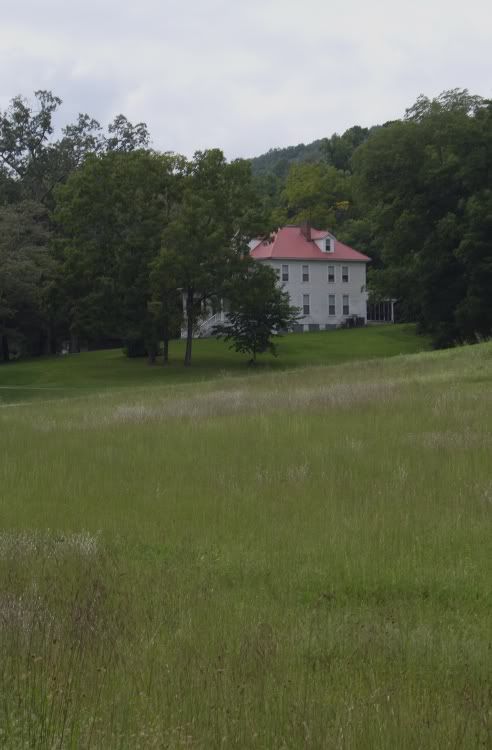
I occasionally have a nightmare about that house. I'm not sure why.
When we were walking the half mile to and from school my sister and I used to take a shortcut that took us behind the Tomlinson house. It's been used to house childrens' home workers through the years, so it's been kept up. It's a great house. It has a wonderful giant room on the top floor. A giant, empty, sunny attic, I guess, with wood floors that would make it a fantastic dance studio. All in all, it's a beautiful house, really, but for some reason, the nightmares.
This, really, is my memory. And that's where I grew up--in the shadow of a beautiful, mostly gone, era.

